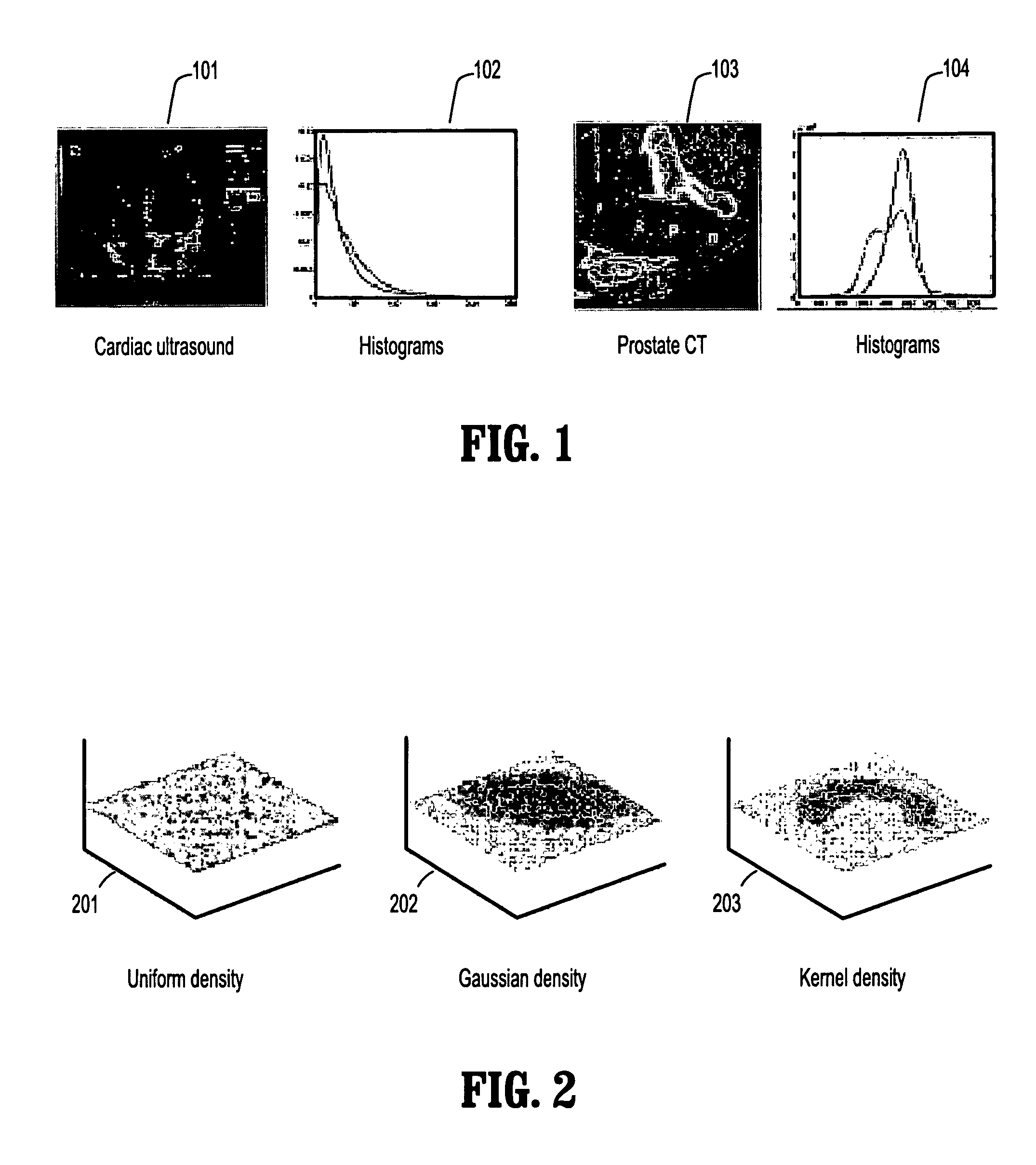Efficient kernel density estimation of shape and intensity priors for level set segmentation
a kernel density and segmentation technology, applied in image analysis, image enhancement, instruments, etc., can solve the problems of difficult segmentation, difficult segmentation in medical image data, and frequent encounter of segmentation problems
- Summary
- Abstract
- Description
- Claims
- Application Information
AI Technical Summary
Benefits of technology
Problems solved by technology
Method used
Image
Examples
Embodiment Construction
[0027]A level set process was originally proposed as a means to propagate interfaces in time. See, for example, A. Dervieux and F. Thomasset. A finite element method for the simulation of Raleigh-Taylor instability. Springer Lect. Notes in Math., 771:145-158, 1979 and S. J. Osher and J. A. Sethian. Fronts propagation with curvature dependent speed: Algorithms based on Hamilton—Jacobi formulations. J. of Comp. Phys., 79:12-49, 1988.
[0028]The level set method has become increasingly popular as a framework for image segmentation. The key idea is to represent an interface Γ⊂Ω in the image domain Ω⊂ R3 implicitly as the zero level set of an embedding function φ:Ω→R:
Γ={xεΩ|φ(x)=0}, (1)
and to evolve Γby propagating the embedding function φ according to an appropriate partial differential equation. The first applications of this level set formalism for the purpose of image segmentation were proposed in V. Caselles, F. Cattée, T. Coll, and F. Dibos. A geometric model for active contours in...
PUM
 Login to View More
Login to View More Abstract
Description
Claims
Application Information
 Login to View More
Login to View More - R&D
- Intellectual Property
- Life Sciences
- Materials
- Tech Scout
- Unparalleled Data Quality
- Higher Quality Content
- 60% Fewer Hallucinations
Browse by: Latest US Patents, China's latest patents, Technical Efficacy Thesaurus, Application Domain, Technology Topic, Popular Technical Reports.
© 2025 PatSnap. All rights reserved.Legal|Privacy policy|Modern Slavery Act Transparency Statement|Sitemap|About US| Contact US: help@patsnap.com



